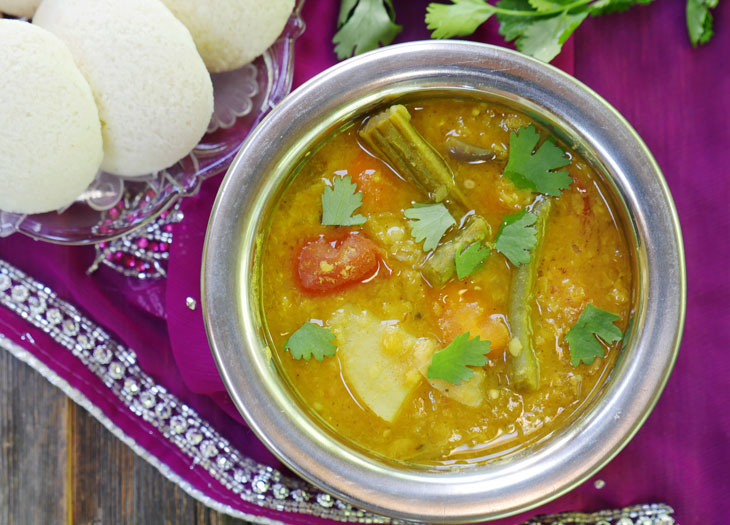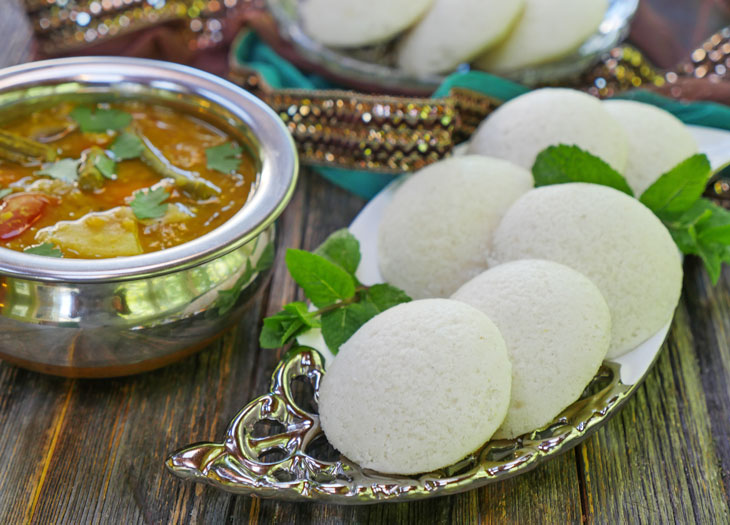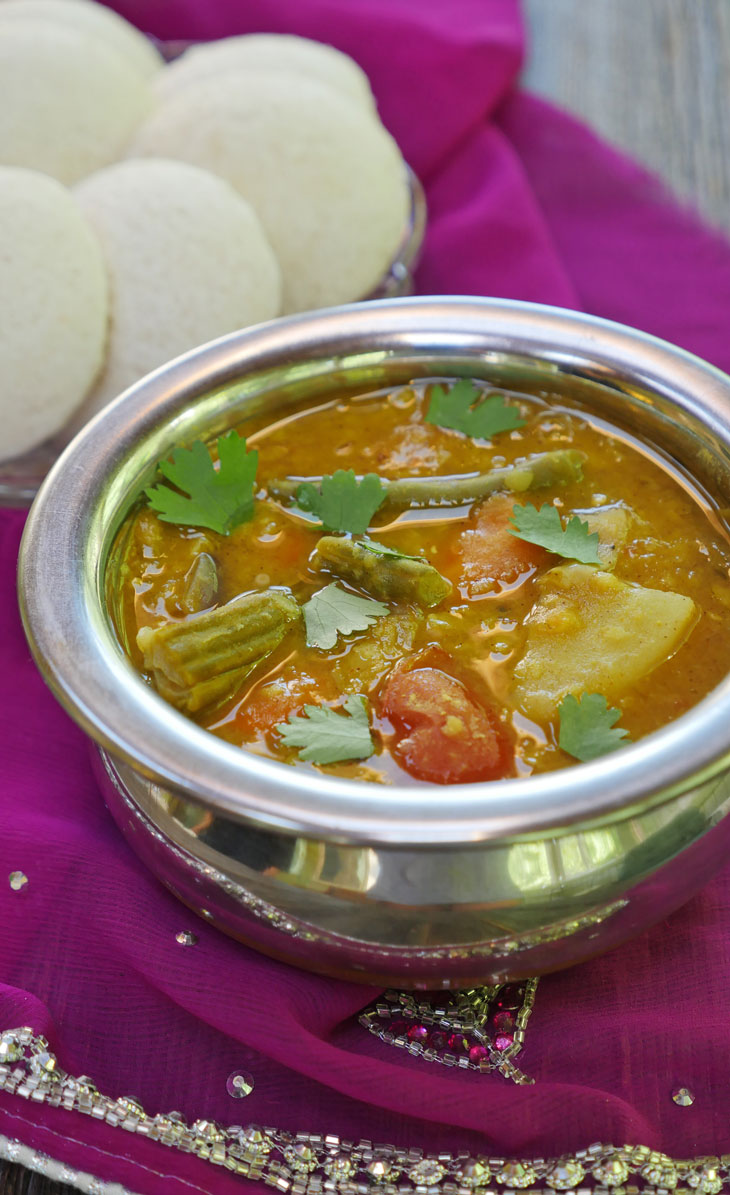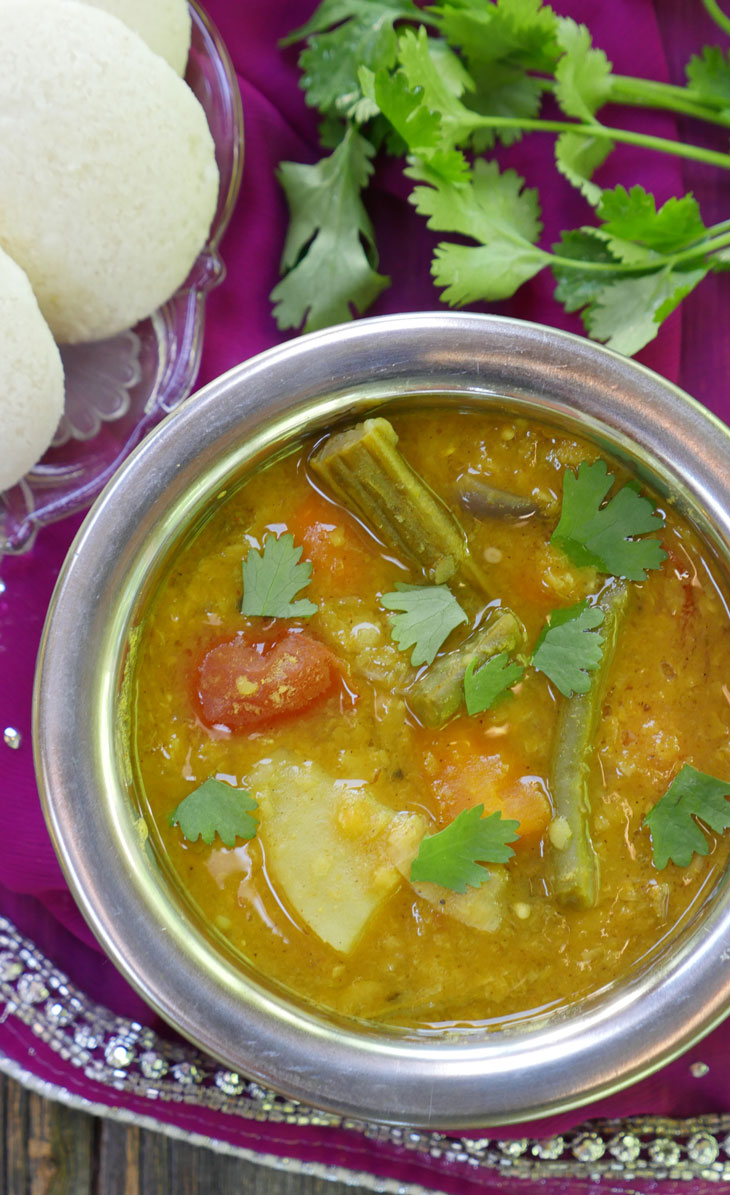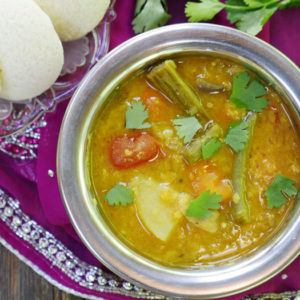What is Sambar?
Every South Indian household makes its own version of this beloved dish. While spices can vary, there are a few staple ingredients in sambar: lentils (typically toor dal), mixed vegetables, and tamarind. The type of vegetables in this stew can change depending upon the season and what’s available. The tamarind gives the dish a slightly fruity and tangy flavor, and a bit of sugar or jaggery lends a slightly sweet flavor. This dish is often served for breakfast or brunch, alongside idli or dosa. Instant pot sambar is the perfect dish to make any time of the year because it’s fresh, light, and filling all at the same time. This South Indian stew also happens to be naturally gluten-free, vegetarian, and vegan. I love sambar on its own, but when you combine it with soft and fluffy idli? Oh my goodness. It’s the absolute perfect meal. Okay well actually… Maybe sambar and dosa is the absolute perfect meal… I mean, both are amazing, but if I had to choose between idli and dosa… I’d choose dosa. Thoughts? Here’s the thing. While I really love soft and fluffy idli, you can’t beat the crunch you get from dosa. I’m not sure there is anything better than dipping pieces of crispy dosa in a bowl of hot sambar. Some of the dosa gets soft, and then some parts stay crisp. It’s just so, so good. When it comes to serving sambar, you really can’t go wrong with either idli or dosa. And if you can’t choose between the two, then I guess you can eat sambar like soup. Or you can make both, lol.
What Vegetables are in Sambar?
Sambar is typically made with mixed vegetables – use any vegetable you’d like. The great thing about sambar is that by switching up the vegetables, you can get a slightly different sambar every time you make this dish. Use what’s in season.
Here are few ideas of what to add to sambar:
There’s one vegetable I mentioned above that may be new to you. Have you heard of drumsticks? Not like actual drumsticks, silly. I’m talking about the Indian vegetable – it’s apparently also known as moringa (though I’ve never actually heard anyone refer to this vegetable as moringa… like ever). Anyway, drumsticks are one of my favorite Indian vegetables in sambar – it’s the thick green-looking thing on the left side of the picture below. When eating drumsticks, eat the pulpy inside and then discard the fibrous exterior (it’s similar to eating artichoke leaves – use your teeth to eat the pulpy portion, then toss out the rest). I have to use my fingers to eat this vegetable, but my (south Indian) husband somehow removes the pulpy part in his mouth, which for some reason absolutely fascinates me. I weirdly enjoy watching him eat drumsticks. I’m also (very) easily amused… Anyway, try it out – go to any Indian grocery store, and you’ll see it in the frozen aisle.
Can I use Pre-Made or Store-Bought Sambar Masala instead of Individual Spices?
Yes! If you’d like to use your own sambar blend or store-bought sambar masala, then leave out my spices and add the masala to taste. I’ve listed individual spices for this recipe for those who don’t want to buy masala or for those who are like me and prefer to control the amount of spices used. You’ll notice that in most of my recipes, I prefer to use individual spices rather than store-bought pre-made masalas (store-bought garam masala being the exception). There are two reasons that I prefer to use individual spices: That said, you can absolutely use sambar masala if you have a family recipe or prefer to do it that way. Just make sure you like the masala mix, so you’re happy with the end result. If you do try my instant pot sambar as written, though, let me know! Like this recipe? Pin it to your favorite Pinterest board now so you will remember to make it later!
